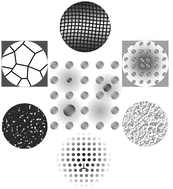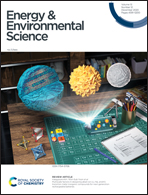Unveiling the phonon scattering mechanisms in half-Heusler thermoelectric compounds†
Abstract
Half-Heusler (HH) compounds are among the most promising thermoelectric (TE) materials for large-scale applications due to their superior properties such as high power factor, excellent mechanical and thermal reliability, and non-toxicity. Their only drawback is the remaining-high lattice thermal conductivity. Various mechanisms were reported with claimed effectiveness to enhance the phonon scattering of HH compounds including grain-boundary scattering, phase separation, and electron–phonon interaction. In this work, however, we show that point-defect scattering has been the dominant mechanism for phonon scattering other than the intrinsic phonon–phonon interaction for ZrCoSb and possibly many other HH compounds. Induced by the charge-compensation effect, the formation of Co/4d Frenkel point defects is responsible for the drastic reduction of lattice thermal conductivity in ZrCoSb1−xSnx. Our work systematically depicts the phonon scattering profile of HH compounds and illuminates subsequent material optimizations.



 Please wait while we load your content...
Please wait while we load your content...